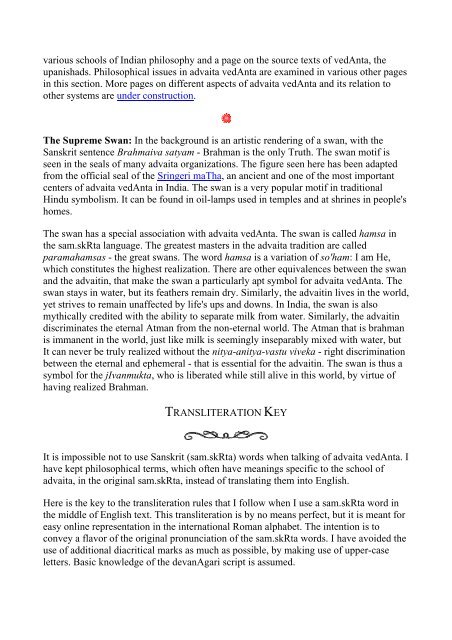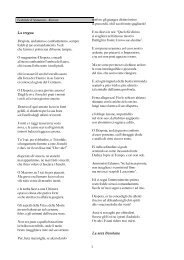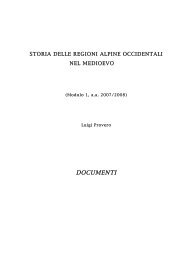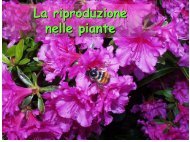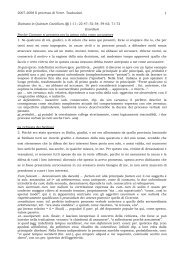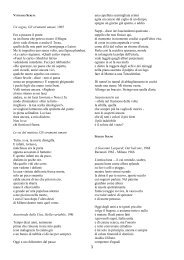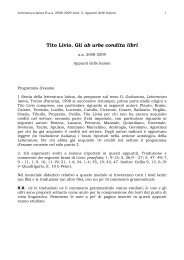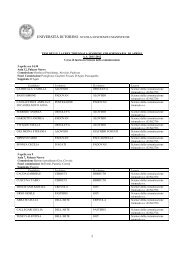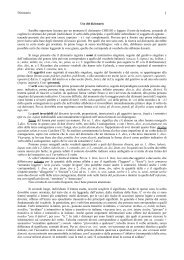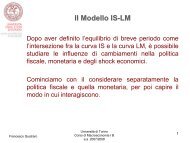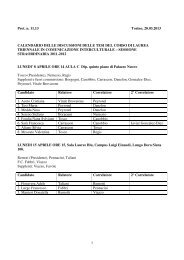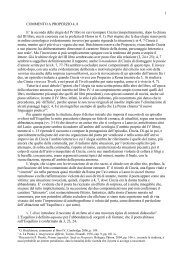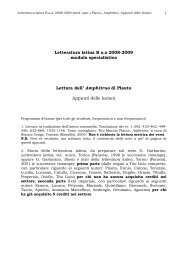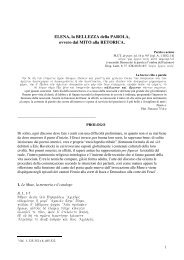ajAti vAda
ajAti vAda
ajAti vAda
You also want an ePaper? Increase the reach of your titles
YUMPU automatically turns print PDFs into web optimized ePapers that Google loves.
various schools of Indian philosophy and a page on the source texts of vedAnta, the<br />
upanishads. Philosophical issues in advaita vedAnta are examined in various other pages<br />
in this section. More pages on different aspects of advaita vedAnta and its relation to<br />
other systems are under construction.<br />
The Supreme Swan: In the background is an artistic rendering of a swan, with the<br />
Sanskrit sentence Brahmaiva satyam - Brahman is the only Truth. The swan motif is<br />
seen in the seals of many advaita organizations. The figure seen here has been adapted<br />
from the official seal of the Sringeri maTha, an ancient and one of the most important<br />
centers of advaita vedAnta in India. The swan is a very popular motif in traditional<br />
Hindu symbolism. It can be found in oil-lamps used in temples and at shrines in people's<br />
homes.<br />
The swan has a special association with advaita vedAnta. The swan is called hamsa in<br />
the sam.skRta language. The greatest masters in the advaita tradition are called<br />
paramahamsas - the great swans. The word hamsa is a variation of so'ham: I am He,<br />
which constitutes the highest realization. There are other equivalences between the swan<br />
and the advaitin, that make the swan a particularly apt symbol for advaita vedAnta. The<br />
swan stays in water, but its feathers remain dry. Similarly, the advaitin lives in the world,<br />
yet strives to remain unaffected by life's ups and downs. In India, the swan is also<br />
mythically credited with the ability to separate milk from water. Similarly, the advaitin<br />
discriminates the eternal Atman from the non-eternal world. The Atman that is brahman<br />
is immanent in the world, just like milk is seemingly inseparably mixed with water, but<br />
It can never be truly realized without the nitya-anitya-vastu viveka - right discrimination<br />
between the eternal and ephemeral - that is essential for the advaitin. The swan is thus a<br />
symbol for the jIvanmukta, who is liberated while still alive in this world, by virtue of<br />
having realized Brahman.<br />
TRANSLITERATION KEY<br />
It is impossible not to use Sanskrit (sam.skRta) words when talking of advaita vedAnta. I<br />
have kept philosophical terms, which often have meanings specific to the school of<br />
advaita, in the original sam.skRta, instead of translating them into English.<br />
Here is the key to the transliteration rules that I follow when I use a sam.skRta word in<br />
the middle of English text. This transliteration is by no means perfect, but it is meant for<br />
easy online representation in the international Roman alphabet. The intention is to<br />
convey a flavor of the original pronunciation of the sam.skRta words. I have avoided the<br />
use of additional diacritical marks as much as possible, by making use of upper-case<br />
letters. Basic knowledge of the devanAgari script is assumed.


